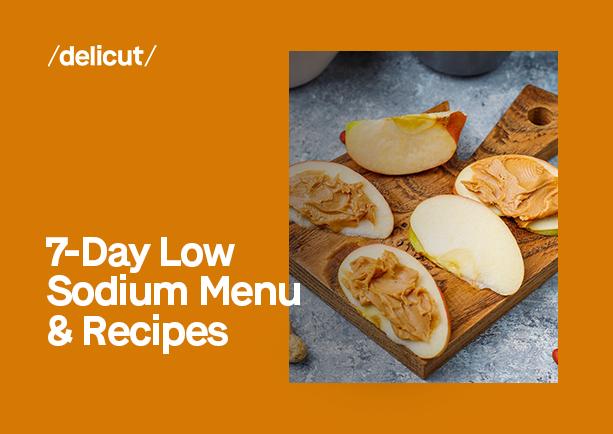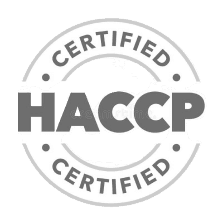7-Day Low Sodium Menu & Recipes

In a world where high-sodium diets have become the norm, shifting towards a low-sodium lifestyle is crucial for maintaining optimal health, particularly for heart and blood pressure wellness. Excessive sodium intake is a known contributor to hypertension and cardiovascular diseases, making it imperative to understand and manage our daily sodium consumption.
This 7-day low-sodium diet menu and recipes guide is designed to show you how you can enjoy delicious and diverse meals while keeping your sodium intake in check. From flavorful breakfasts to satisfying dinners, each recipe is crafted to enhance natural flavors using herbs and spices instead of salt.
Understanding Low-Sodium Diets
A low-sodium diet involves reducing the amount of sodium (salt) consumed in daily meals. Sodium is an essential nutrient, but in excess, it can lead to health issues such as high blood pressure, heart disease, and stroke.
The American Heart Association recommends no more than 2,300 milligrams (mg) a day and moving toward an ideal limit of no more than 1,500 mg per day for most adults.
On a low-sodium diet, the focus shifts from processed and packaged foods, which often contain high levels of added salt, to natural and whole foods like fresh fruits, vegetables, lean meats, and whole grains.
These foods are naturally low in sodium and rich in other essential nutrients. The diet also encourages cooking at home, where you have complete control over the amount of salt used.
Day-by-Day Low-Sodium Diet Meal Plan
A 7-day low-sodium meal plan is an effective strategy to reduce salt intake while enjoying a variety of nutritious and flavorful meals. This plan focuses on fresh, whole foods and minimizes the use of processed items, which are often high in sodium.
Each day's menu is carefully crafted to include a balanced breakfast, lunch, dinner, and snacks, all designed to keep daily sodium levels within recommended guidelines.
Day 1:
Breakfast: Oatmeal topped with fresh berries and a sprinkle of cinnamon.
Lunch: Grilled chicken salad with mixed greens, cherry tomatoes, cucumbers, and a homemade vinaigrette.
Dinner: Baked salmon with roasted Brussels sprouts and sweet potatoes.
Snack: Apple slices with almond butter.
Day 2:
Breakfast: Greek yogurt with sliced banana and a drizzle of honey.
Lunch: Turkey and avocado wrap using a whole wheat tortilla.
Dinner: Vegetable stir-fry with tofu and a side of brown rice.
Snack: Carrot sticks with hummus.
Day 3:
Breakfast: Smoothie with spinach, frozen berries, banana, and almond milk.
Lunch: Lentil soup with a side of mixed greens salad.
Dinner: Grilled shrimp over quinoa with a lemon-herb dressing.
Snack: A handful of mixed nuts.
Day 4:
Breakfast: Scrambled eggs with spinach and tomatoes.
Lunch: Quinoa salad with black beans, corn, and diced bell peppers.
Dinner: Baked chicken breast with steamed broccoli and quinoa.
Snack: Sliced cucumber with a yogurt dip.
Day 5:
Breakfast: Whole grain toast with mashed avocado.
Lunch: Caprese salad with fresh mozzarella, tomatoes, basil, and balsamic vinegar.
Dinner: Beef and vegetable kebabs with a side of couscous.
Snack: Fresh fruit salad.
Day 6:
Breakfast: Banana and almond pancakes.
Lunch: Spinach and goat cheese salad with walnuts and a raspberry vinaigrette.
Dinner: Lemon-garlic tilapia with roasted asparagus and wild rice.
Snack: A peach or nectarine.
Day 7:
Breakfast: Berry and chia seed parfait with Greek yogurt.
Lunch: Chickpea and vegetable curry with a side of cauliflower rice.
Dinner: Grilled pork chop with a side of mashed butternut squash and green beans.
Snack: A small bowl of air-popped popcorn.
Tips for Sticking to a Low-Sodium Diet
Adhering to a low-sodium diet requires mindfulness and a few strategic practices. Here are some tips to help you stay on track:
- Read Labels: Always check nutrition labels for sodium content, as many processed and packaged foods contain high levels of salt.
- Cook at Home: Preparing meals at home gives you complete control over the amount of sodium used. Experiment with herbs, spices, and salt-free seasonings to enhance flavors.
- Choose Fresh Ingredients: Opt for fresh fruits, vegetables, and lean meats, which are naturally low in sodium. Avoid canned or processed items which often have added salt.
- Be Cautious When Eating Out: When dining out, request your meal to be prepared with less or no added salt. Opt for steamed, grilled, or baked dishes over fried ones.
- Gradual Reduction: If you’re used to a high-sodium diet, gradually reduce your salt intake to allow your taste buds to adjust.
- Stay Hydrated: Drinking water can help flush out excess sodium from your body.
Conclusion
This 7-day meal plan demonstrates that a low-sodium diet doesn't have to be bland or restrictive; instead, it can be full of diverse, flavorful, and satisfying meals. By incorporating fresh ingredients, experimenting with herbs and spices, and being mindful of food choices, especially when shopping and dining out, you can easily adhere to this healthier eating pattern.
Remember, the key to success in any dietary change is consistency and willingness to adapt. As you continue beyond this week, keep exploring new recipes and flavors that align with low-sodium guidelines.
With these strategies and a bit of creativity, maintaining a low-sodium diet can become a natural and enjoyable part of your daily life, leading to long-term health benefits.
FAQs
1. What is a low-sodium diet, and why is it important to follow?
A low-sodium diet involves reducing salt (sodium chloride) intake, typically to less than 2,300 milligrams per day. It's essential for managing blood pressure, reducing the risk of heart disease, stroke, and kidney damage. High sodium intake is linked to hypertension (high blood pressure), a major risk factor for cardiovascular diseases. Following a low-sodium diet can help in maintaining a healthy blood pressure level and overall cardiovascular health.
2. Can you provide a sample 7-day low-sodium menu plan with recipes for each day?
Please refer to the blog for a detailed 7-day low-sodium meal plan. Each day includes breakfast, lunch, dinner, and snack ideas, focusing on fresh ingredients and flavorful, salt-free seasonings.
3. What are some common sources of hidden sodium in foods, and how can I avoid them while following this menu?
Hidden sodium is often found in processed foods, canned soups, salad dressings, deli meats, and packaged snacks. To avoid these, read food labels carefully, choose fresh or frozen produce over canned, opt for unsalted nuts, and prepare meals at home using fresh ingredients. Be cautious with condiments and sauces, as they can be high in sodium.
4. Are there specific health conditions or individuals who should consider a low-sodium diet?
Individuals with hypertension, heart disease, kidney disease, or those at risk for these conditions should consider a low-sodium diet. It's also recommended for older adults and people with a family history of heart disease. Consulting with a healthcare provider is advisable before making significant dietary changes.
5. How can I adapt my current eating habits to transition into a low-sodium diet successfully for the full 7 days?
To transition to a low-sodium diet, start by gradually reducing the salt added to your food. Experiment with herbs, spices, and salt-free flavorings to enhance taste. Cook more meals at home, as this allows for better control over sodium content.
Focus on fresh fruits, vegetables, lean proteins, and whole grains. Stay mindful of portion sizes and be aware of the sodium content in restaurant meals and packaged foods.
Trending Searches:
Meal Plan Dubai | Affordable Meal Plans Abu Dhabi | Meal Plan Ajman | Meal Plan Al In | Meal Plan Sharjah | Meal Plan Subscription
Read More:
Healthy Dry Snacks Fueling your Body When youe Out and About
Prioritizing your Health Top 5 Perfect Meal Ideas for your Health
Healthy Food Swaps Small Changes for Big Health Benefits
10 Easy and Nutritious Foods for Busy Weeknights
23 Healthy Dinners for Weight Loss
Related Blogs
Why do most people in the UAE get their calories wrong
Dec 8, 2025 | 6DASH Diet Meal Plan
Nov 11, 2025 | 8Fatty Liver Meal Plan
Oct 31, 2025 | 8Pregnancy Diet Meal Plan
Oct 27, 2025 | 82000 Calorie Meal Plan
Oct 1, 2025 | 8Intermittent Fasting Diet Plan
Sep 5, 2025 | 81000 Calorie Meal Plan
Sep 5, 2025 | 8High-Protein Meal Plans
Sep 5, 2025 | 8How to Choose the Right Meal Plan for Your Fitness Goals
Sep 5, 2025 | 8The GM diet plan: Is it possible to shed fat in just 7 days?
Sep 5, 2025 | 8






